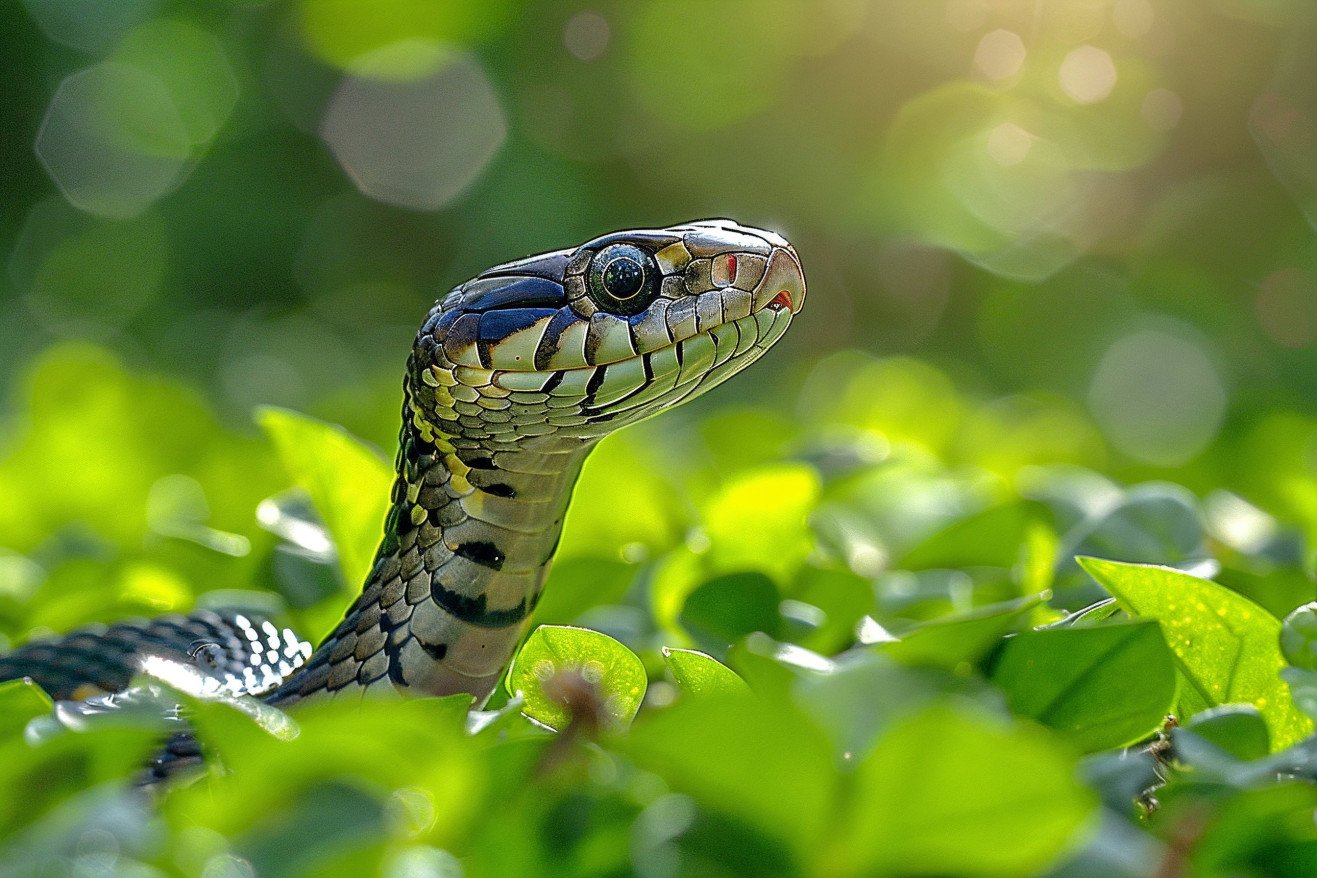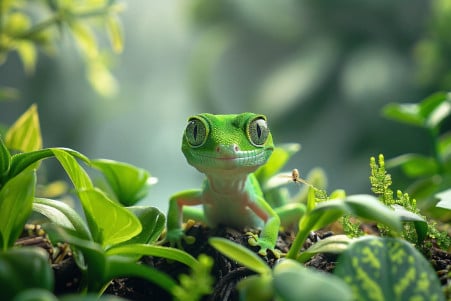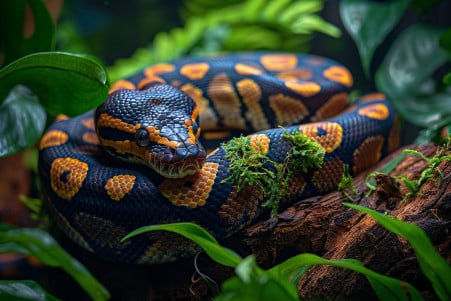What Do Baby Snakes Eat? A Complete Diet Guide for Neonatal Snakes
31 March 2024 • Updated 30 March 2024

Knowing what to feed baby snakes is important for their overall health and development. Baby snakes eat smaller prey items such as pinky mice, small lizards, or large insects/worms. Their diet varies by species, but most eat rodents, birds, amphibians, or invertebrates that can be swallowed whole and take several days to digest. It's important to make sure that the prey isn't too large for the snake.
By examining zoological and herpetological studies on the diets of neonatal snakes, we will gain a comprehensive understanding of the nutritional needs of different snake species during their early lives. This will help responsible reptile owners and enthusiasts make sure that they are feeding these special predators the right diet during this important life stage. We hope to give you a complete understanding of the best feeding practices to make sure that baby snakes are healthy and thriving in a captive or rehabilitation setting.
What do baby snakes eat?
How to Feed a Baby Snake in Captivity
Feeding a baby snake in captivity requires a few important steps to ensure that the snake is healthy and comfortable. First, it is important to make sure that the snake is being offered prey that is an appropriate size, which is generally pinky or fuzzy mice. This will help prevent regurgitation and impaction. In most cases, baby snakes will need to be fed every 5-7 days, although this will need to be adjusted as the snake grows. It is also important to use tongs or feeding tools to feed the snake to prevent bites and reduce stress. Finally, make sure that the snake has a secure hide box and that the temperature in the enclosure is correct to encourage natural feeding behavior.
As the snake grows, the prey size can be increased, but this should be done gradually, and the snake should be monitored closely for any issues. It is also important to note that some snakes may refuse frozen prey at first because it doesn't have the same scent or movement as live prey. If this happens, you can try offering live prey, pre-killed prey, or scenting frozen prey to stimulate the snake's feeding response.
If you follow these steps and make sure that you are feeding the snake the right prey in the right way, you can help ensure that your baby snake will be healthy and happy in captivity. Following these steps will also help ensure that the snake will be able to transition to eating the natural prey and exhibiting the natural behaviors of wild snakes.
The Natural Diet and Feeding Ecology of Wild Baby Snakes
In the wild, baby snakes eat a variety of small prey to survive. According to the MorphMarket Reptile Community, larger snake species' hatchlings may eat bird nestlings, rejected rodent pups, and insects. Meanwhile, the National Park Service explains that the natural diet of baby snakes depends on the species and the region. For example, baby rattlesnakes in the Great Basin Desert eat lizards and small mice, but adults eat mostly rodents.
Baby venomous snakes are born with venom to help them hunt their prey, according to Critter Control. Knowledge of the natural diet and feeding ecology of baby snakes can help ensure that the care of captive snakes meets their dietary needs as they grow. It can also help ensure that they adapt to their new diet as easily as possible.
How to Get Baby Snakes to Eat Frozen/Thawed Prey
Because of the absence of scent and movement, baby snakes may not initially accept frozen/thawed prey in captivity. According to Anapsid.org, some hatchlings may eat right after hatching, but most will not, and the article recommends starting with live or pre-killed prey to stimulate feeding.
Scenting prey with lizard or frog scents can also help stimulate feeding responses, as mentioned by RodentPro. The site also notes that some species of baby snakes will only eat pinky mice that have been scented in this way, and it can take several months for them to become willing to eat unscented prey.
As the Animal Medical Center of Marquette warns, never force-feed a snake unless a vet has recommended it as a last resort. Instead, work on transitioning baby snakes to frozen/thawed rodents so that they can be fed more easily and safely. If a baby snake goes off feed for an extended period, it's important to consult a vet to make sure there isn't an underlying issue.
By using these feeding stimulation and transitioning methods, you can make sure your baby snake is eating an appropriate diet in captivity. However, it's important to watch for signs of malnutrition and other health problems, which we'll cover in the next section.
How to Tell If a Baby Snake Is Malnourished and Unhealthy
Healthy baby snakes will have clear, bright eyes, smooth skin, and be alert and active, according to the Redwood Pet Clinic. Signs of malnutrition include weight loss, loose skin, sunken eyes, and protruding bones. The Merck Veterinary Manual explains that a malnourished reptile may appear emaciated, and some may need to be hand-fed with a feeding tube under veterinary supervision.
Respiratory issues, discharge, swelling, and shedding problems can also be signs of other health issues, according to the Redwood Pet Clinic. Anorexia, or loss of appetite, can be due to stress, illness, parasites, or other environmental factors, according to VCA Animal Hospitals.
If a baby snake shows any signs of malnutrition or illness, it is important to take it to the vet as soon as possible. With proper care and attention, these fragile reptiles can be nursed back to health.
Housing and Handling for Baby Snakes
Proper housing and handling are important for the health and happiness of baby snakes. As noted by Hoschton Animal Hospital, baby snakes need to be housed in an enclosure that is the right size and has the right ventilation and hiding places. The temperature for tropical snakes should be between 75-90°F, and for temperate snakes, it should be between 75-85°F.
Lapel Animal Clinic and Brookville Veterinary Hospital both note that substrates like newspaper, aspen shavings, or cypress mulch are best for easy cleaning. They also warn against using heating rocks, which can burn the snake.
When handling baby snakes, it's important to be gentle and avoid stress, especially when feeding and cleaning their enclosures. As mentioned by Hoschton Animal Hospital, never attempt to force-feed a snake unless it's been recommended as a last resort by a vet. Always ask a vet for help if you have any questions or concerns about housing or handling to make sure that your baby snake stays healthy and happy.
Conclusion: How to Make Sure Your Baby Snake Gets the Right Nutrition
Knowing the dietary needs of baby snakes is important for making sure that they grow and develop properly. In captivity, the best way to feed a snake is to use frozen/thawed rodents that are an appropriate size. It's important to monitor feeding behavior and adjust the size of the prey as the snake grows.
Seeking veterinary care and ensuring that the snake's habitat is set up properly can help prevent health problems. With the right care and nutrition, baby snakes can grow into healthy adults.


